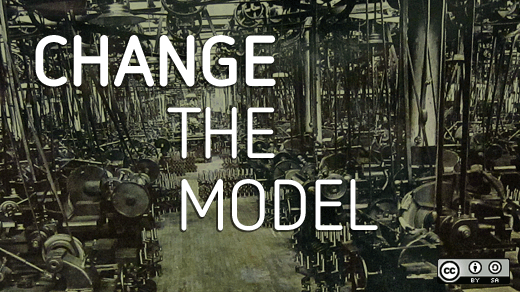What a great article in Sunday’s New York Times about East Mooresville Intermediate School.
A bunch of quotes from the article that stood out to me. First, about the program’s success:
Overwhelmed by requests to view the programs in action, the district now herds visitors into groups of 60 for monthly demonstrations; the waiting list stretches to April.
Impressive. And:
Mooresville ranks 100th out of 115 districts in North Carolina in terms of dollars spent per student — $7,415.89 a year — but it is now third in test scores and second in graduation rates.
How are they doing it? Every kid gets a laptop. (One Laptop Per Child, one might even say.) And how are those laptops being used?
The difference, teachers and administrators here said, is that they value computers not for the newest content they can deliver, but for how they tap into the oldest of student emotions — curiosity, boredom, embarrassment, angst — and help educators deliver what only people can.
With a curious new method:
Many classrooms have moved from lecture to lattice, where students collaborate in small groups with the teacher swooping in for consultation.
That looks a lot like methods familiar to old hands from the open source world:
Ms. Higgins had the more outgoing students make presentations on the Declaration of Independence, while shy ones discussed it in an online chat room, which she monitored. “I’m not a very social person, but I have no problem typing on a keyboard,” said one of those shy ones, Chase Wilson. “It connected me with other students — opened me up and helped me with talking in public.”
And finally, a great quote epitomizing the nature of the success.
“This is not about the technology,” Mark Edwards, superintendent of Mooresville Graded School District, would tell the visitors later over lunch. “It’s not about the box. It’s about changing the culture of instruction.”
Reminds me of someone who once said: “it’s not a laptop project; it’s an education project.” Hmm.
Once upon a time, I believed that open source software was the key to improving education.
Then I believed that open source content was the key to improving education.
I now believe that open source practice is the key to improving education — which is the hardest and most important change of all. Thanks to Mooresville for showing us how that might be done.
This article was originally posted on Greg DeKoenisberg Speaks.







2 Comments